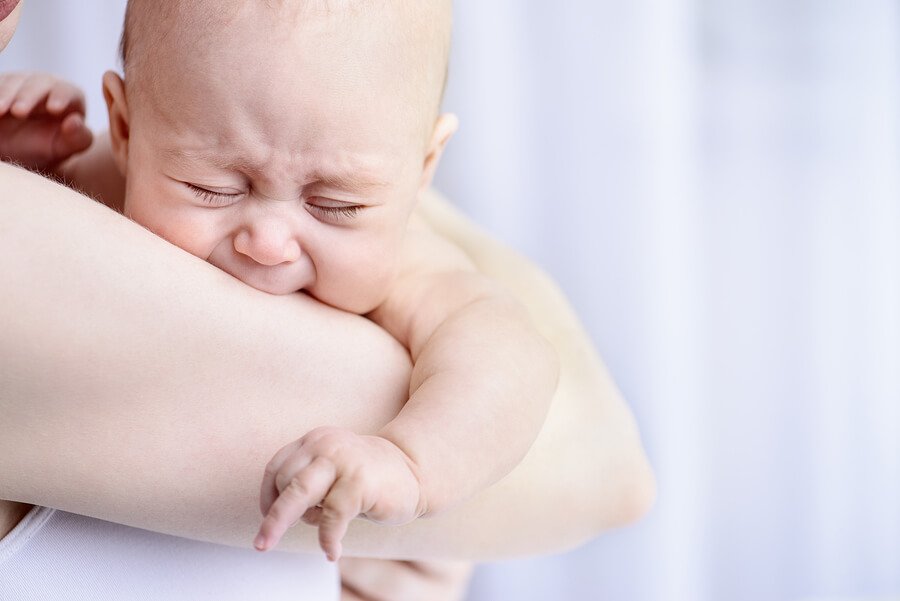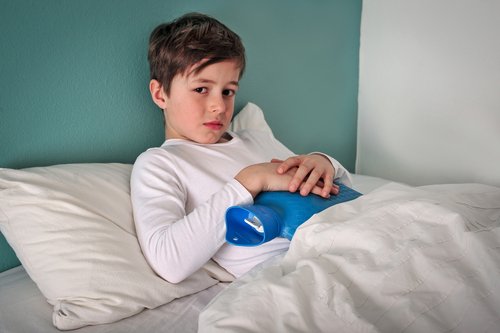Intussusception in Children: Symptoms, Causes and Treatment

Another term for referring to this condition is the telescope effect, because of the way the tissue folds. Generally, it occurs in the colon, the small intestine, or in the section between these two organs.
Early treatment is key in avoiding complications. Therefore, learning about this issue can make all the difference.
The symptoms of intestinal invagination
The first symptoms of intestinal invagination in children is sudden and loud crying. At first, the pain may appear in the form of intermittent stomach cramps. The cramping becomes more painful with each occurrence, and each episode becomes longer and longer.
While the symptoms may vary from one case to another, the frequent signs of this condition are the following:
- Bending of the knees: Knees pulled up to the chest while the child wriggles and cries.
- Bloody stool with a mucus-like consistency, similar to jam or gelatin.
- Fever, lethargy, paleness, vomiting bile, dehydration, sweating, etc.
- On some occasions, you may notice a lump or bloating in the abdominal region.
As soon as you notice any of these symptoms, you should take your child to the doctor or pediatrician for a thorough examination. This will likely include X-ray, an air enema or an ultrasound with contrast. Treatment within 24 hours generally results in positive results.

Different ways to treat intussusception in children
Once a medical professional has carried out an evaluation, he or she will decide on a course of treatment. The first step involves the administration of intravenous liquids to prevent dehydration. After this, treatment involves the following:
Application of an enema
Many doctors opt to start treatments with a barium enema. This involves placing a small tube in the child‘s rectum in order to introduce air. The goal is for the air to return the intestines to their original state. However, in case of infection, this method may not be effective.
Surgical intervention
If the child’s health is too delicate for other procedures, the doctor may decide that surgery is necessary. The procedure involves an incision in the abdomen. The surgeon places air in the affected area to put the tissue back in its place. In cases of dead tissue, the surgeon will remove it and suture the surrounding tissue together.
It’s important to point out that intestinal invagination in children is a condition that puts the child’s life at risk. Therefore, it’s important you seek medical attention as soon as the first symptoms appear. In doing so, you increase the chances of effective treatment and quick recovery.
“As soon as you notice any of these symptoms, you should take your child to the doctor or pediatrician for a thorough examination.”
What are the causes of intussusception in children?
Intestinal invagination in children can be the result of unknown causes. However, viral illnesses, polyps, and inflamed lymph nodes in the abdominal cavity can be risk factors .
Intussusception is a condition that can appear at any age. However, the majority of cases occur in small children. What’s more, the issue is slightly more common among males.

What are the consequences of intussusception in children?
Intestinal invagination in children occurs because the intestine folds into itself. This condition can have the following consequences:
- Irritation and inflamation.
- Reduced blood flow, leading to dead tissue.
- Foods cannot pass through.
- Excessive bleeding.
- Perforation that can lead to infection, dehydration and sudden shock.
When this condition isn’t treated in time, the results can be fatal. Another important factor to keep in mind is that the intestinal invagination tends to be recurrent. Therefore, it’s important to control the issue frequently.
In conclusion, intussusception – or intestinal invagination – in children occurs when the part of the intestine slides into the adjacent part. This results in symptoms that require immediate attention. The risks of suffering increase with the existence of previous episodes or family antecedents.
All cited sources were thoroughly reviewed by our team to ensure their quality, reliability, currency, and validity. The bibliography of this article was considered reliable and of academic or scientific accuracy.
- de Lambert, G., Guérin, F., Boubnova, J., Franchi-Abella, S., & Martelli, H. (2014). Invaginación intestinal aguda en lactantes y niños. EMC – Pediatría. https://doi.org/10.1016/s1245-1789(14)68094-x
- Jiménez, J. H. (2005). Invaginación intestinal en pediatría. Revista mexicana de cirugía pediátrica, 12(4), 195-203. http://www.medigraphic.com/pdfs/revmexcirped/mcp-2005/mcp054b.pdf
- Lora-Gómez, R. E. (2014). Dolor abdominal agudo en la infancia. Pediatria Integral.